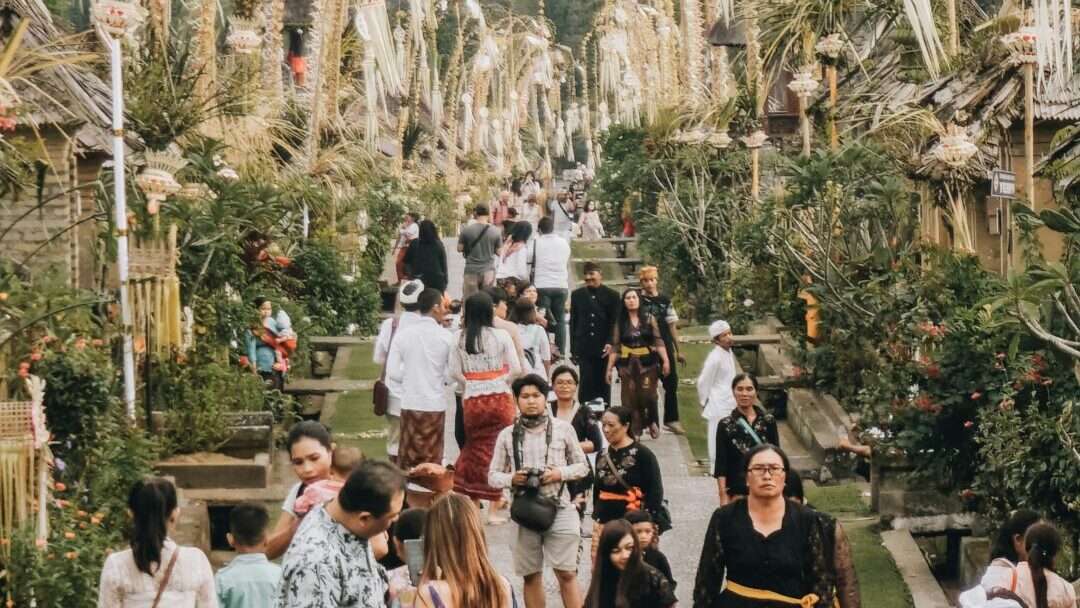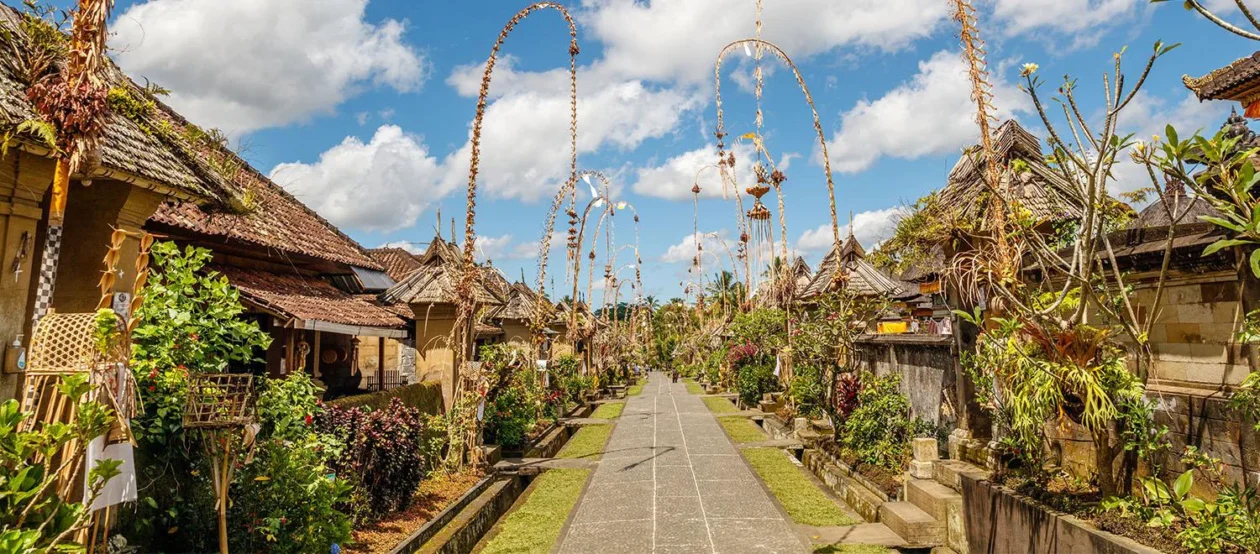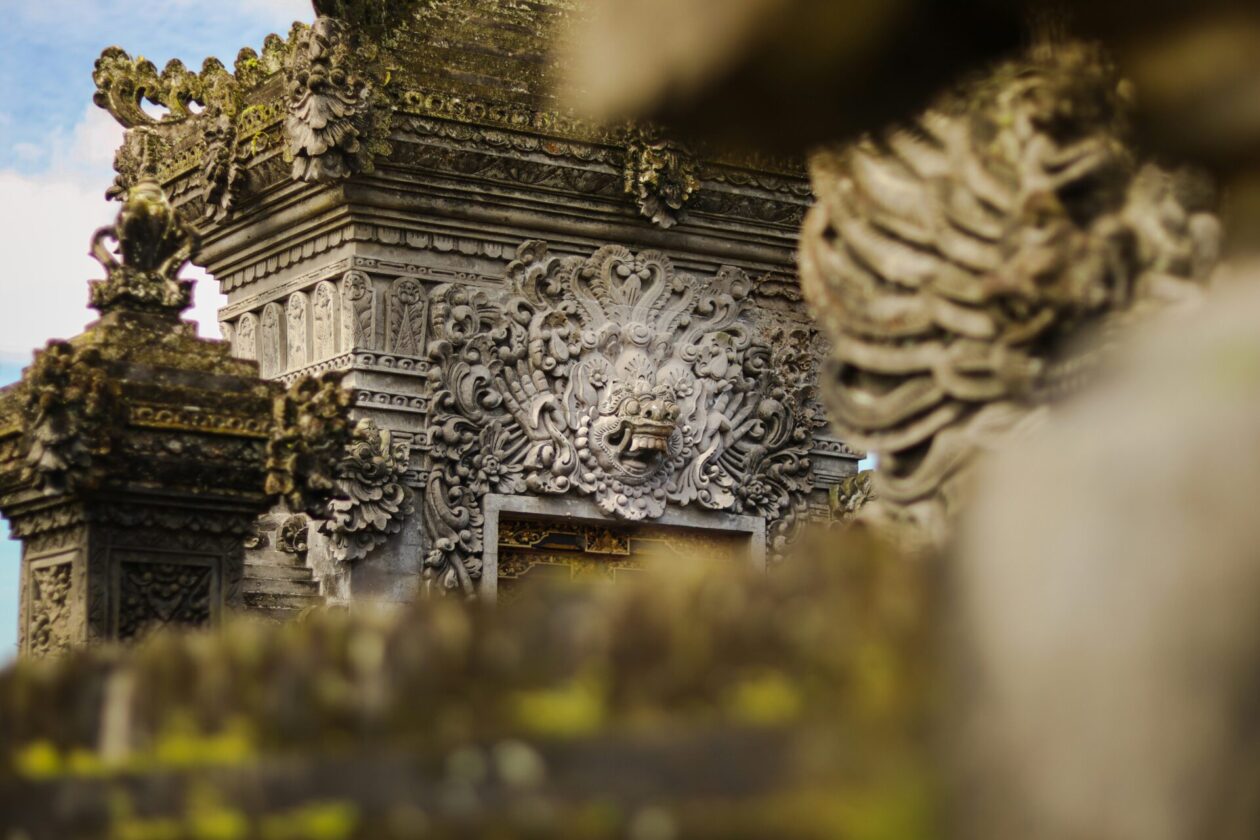Penglipuran Village: Discover the Charm of Penglipuran Village
Published on , last updated on
Written by Emily Suryadi
Visit Penglipuran Village, one of Bali’s best-preserved traditional villages. Famous for its bamboo-lined streets, traditional architecture, and community-based culture, Penglipuran offers a glimpse into authentic Balinese life. Learn about local customs, heritage homes, and sustainable living practices, while enjoying photography, cultural tours, and immersive experiences in this charming highland village.
This guide tells it all.
Why Visit Penglipuran Village? A Step Back in Time

Long before Bali became the internationally celebrated cultural hub it is today, Penglipuran Village stood as a quiet testament to the island’s royal lineage and deeply rooted traditions, nestled in the highlands of Bangli Regency. Here, it’s as if you’re traveling back to a time before smoothie bowls and sunset cocktails; a time when Balinese life revolved around community, spirituality, and harmony with nature.
Up to this day, Penglipuran Village is still free from motor vehicles and disruptive technology. While the people have modernized their homes and opened their doors to curious tourists, there is still a sacredness to this little village.
History & Cultural Significance
Nestled in the highlands of Bangli Regency, this traditional Balinese village is famed for its pristine streets, bamboo-lined pathways, and authentic architecture that reflects centuries of Balinese culture and community harmony that have lasted for over 700 years.
This village was initially created as a rest stop for the villagers of Bayung Gede (another prominent village in Bangli). Penglipuran Village is believed to also be known as kubu bayung or camp for the Bayung people. Thus, the similar structures and customs as the neighboring village. The name Penglipuran is believed to directly translated to 'a place for consolation', as the king of Bangli himself tend to stop by and meditate.
Walking through the village, you can see residents engaging in traditional crafts and ceremonies, offering a unique insight into the daily life of the Balinese people.
Cultural Significance of Penglipuran Village
Today, Penglipuran Village holds great cultural significance for the Balinese. It is a place where traditional customs and rituals are still practiced with reverence. The village is also known for its commitment to environmental conservation, with a strong emphasis on sustainable living and waste management. This dedication to preserving both culture and nature makes Penglipuran Village a model of eco-tourism in Bali.

What to See & Do in Penglipuran Village
Traditional Architecture
Step into a living museum of Balinese heritage. The village’s signature lumbung-style houses, with bamboo structures and alang-alang thatched roofs, reflect centuries-old design principles that honor harmony and simplicity. Each family compound features open courtyards and shrines that embody deep cultural and spiritual meaning.

Village Streets & Bamboo Pathways
Take a stroll along Penglipuran’s beautifully maintained stone pathways, shaded by rows of bamboo. The village’s symmetry and cleanliness have earned it global recognition as one of the cleanest villages in the world, among Giethoorn in the Netherlands and Mawlynnong in India.
Every corner offers a picture-perfect backdrop for photography or leisurely walks.

Cultural Activities
If you're wondering if there are things to do in Penglipuran Village, the answer is abundant!
Join hands-on experiences that connect you with the local rhythm of life, from observing temple ceremonies to joining workshops in traditional crafts like bamboo weaving and penjor making. You can also get hands-on experience in cooking authentic Balinese cuisine and carry that priceless knowledge with you long after your vacation ends.
Visitors can also learn about the village’s sustainable living principles and etiquette that have preserved its authenticity for generations. Cultural performances happen often, so make sure to stay tuned to their Instagram for the latest updates.
What To Do in Penglipuran Village
- Join workshops like making Canang Sari offerings, bamboo-weaving, or klepon making — all guided by locals.
- Witness and participate in cultural performances such as the dramatic Barong Macan dance, held within the bamboo forest setting.
- Stay overnight in a traditional village homestay and enjoy an authentic Balinese dinner al-fresco, immersed in the peaceful village atmosphere.
- For craft lovers: learn to make decorative pieces like gebogan (ceremonial fruit towers) and take part in art workshops such as bamboo painting.
- Explore the surrounding bamboo forest and local traditions toward sustainable living — it’s part nature walk, part culture journey.
- Time your visit with cultural events like the Penglipuran Village Festival (early July), which features parades, music, traditional competitions and community ceremonies.
- Visit their sustainable markets to bring home a touch of Bali with you.
How to Get to Penglipuran Village

Penglipuran Village is located in the Bangli Regency of Bali, approximately 45 kilometers from the island's capital, Denpasar. The village is easily accessible by car or motorbike. The elevated region means the weather is slightly cooler and less humid than the coastal areas.
The journey to Penglipuran Village takes you through scenic landscapes, including rice terraces and lush forests, making it a picturesque trip.
Address
Location: Jalan Jl. Penglipuran, Kubu Kec. Bangli, Kabupaten Bangli, Bali 80611, Indonesia
Opening Hours: 08:00 - 18:30 WITA
Here's a quick rundown on distance depending on where you're traveling from.
- From Ubud: 1 hr
- From Sanur: 1 hr 15 mins
- From Kuta / Legian: 1 hr 45 mins
- From Nusa Dua: 1 hr 45 mins
- From Seminyak: 2 hrs
- From Canggu: 2 hrs
- From Uluwatu: 2.5–3 hrs
Tips for Visiting Penglipuran Village
Best Time to Visit
Arrive early in the morning to enjoy Penglipuran’s serene ambiance before the crowds. The soft light enhances the village’s bamboo-lined streets, perfect for photography and slow exploration. But near closing hours (5-6 PM), you can catch the most stunning sunsets here, too!
Consider avoiding lunch or late afternoon hours, as this is usually the time of day where flocks of tourists on busses will come and explore.
It's also best to be visit during dry season (April-October) for a sunny weather that will allow you to explore all that the village has to offer comfortably.
Hire a Local Guide
For a deeper understanding of the village’s traditions and daily rituals, consider hiring a local guide. They can share stories about community life, architecture, and the customs that keep Penglipuran among Bali’s most preserved cultural sites.
Dress Code
Visitors are encouraged to wear modest and respectful attire, especially when entering temple or ceremonial areas. Lightweight fabrics are ideal for the tropical climate.
Entrance Fee
There is an entrance fee for visiting Penglipuran Village. However, this one-time access allows you to stay all day should you wish. Tickets for Penglipuran Village is available to buy on the spot with cash or credit.
Foreign Adults: IDR 50,000
Foreign Children: IDR 30,000
If you bring your own vehicles, you might have to pay for parking, as follows.
Cars: IDR 5,000
Scooters: IDR 2,000
Accessibility
The best way to explore Penglipuran is on foot. While the village is relatively compact, its sloped pathways and cobblestone lanes may not be fully accessible for wheelchairs.
Visiting Etiquette
Remember — Penglipuran isn’t techinically a museum, but a living village. Respect is highly expected, as locals go about their daily lives amid visiting crowds. Do not litter, listen intently when guided, and keep noise to a minimum to honor the community’s peaceful rhythm.

Nearby Attractions
Extend your journey to nearby wonders like Mount Batur and Lake Batur in Kintamani — ideal for a sunrise trek or scenic day trip. The surrounding bamboo forests, coffee plantations, and handicraft markets offer a perfect continuation of Penglipuran’s natural and cultural charm.
FAQs
How far is Penglipuran Village from Ubud or Kuta?
Penglipuran is about 45 minutes from Ubud and roughly 2 hours from Kuta, depending on traffic. It’s an easy drive through scenic countryside and rice terraces—perfect for a half-day trip.
Can visitors participate in local ceremonies?
Yes, visitors are often welcome to observe or join certain traditional rituals—especially during cultural festivals or village programs. Always follow the locals’ lead and dress respectfully.
Is Penglipuran Village family-friendly?
Absolutely. The village’s car-free streets and open pathways make it safe for children to explore. Families can enjoy hands-on activities like bamboo weaving or traditional cooking classes.
Are guides available for cultural tours?
Yes, local guides are available on-site and can be hired at the entrance or through the village’s official website. They’ll help you understand the meaning behind the architecture, customs, and daily rituals.
Conclusion
Penglipuran Village is a true gem of Bali, offering a unique blend of cultural heritage, natural beauty, and traditional architecture. Whether you are interested in history, culture, or simply seeking a peaceful retreat, Penglipuran Village has something to offer. Its commitment to preserving Balinese traditions and sustainable living makes it a standout destination that should not be missed.
Visit Penglipuran Village to experience the charm and tranquility of one of Bali's most beautiful and culturally rich villages.
Categories: Destination, Art & Culture, Bangli, Things to Do
